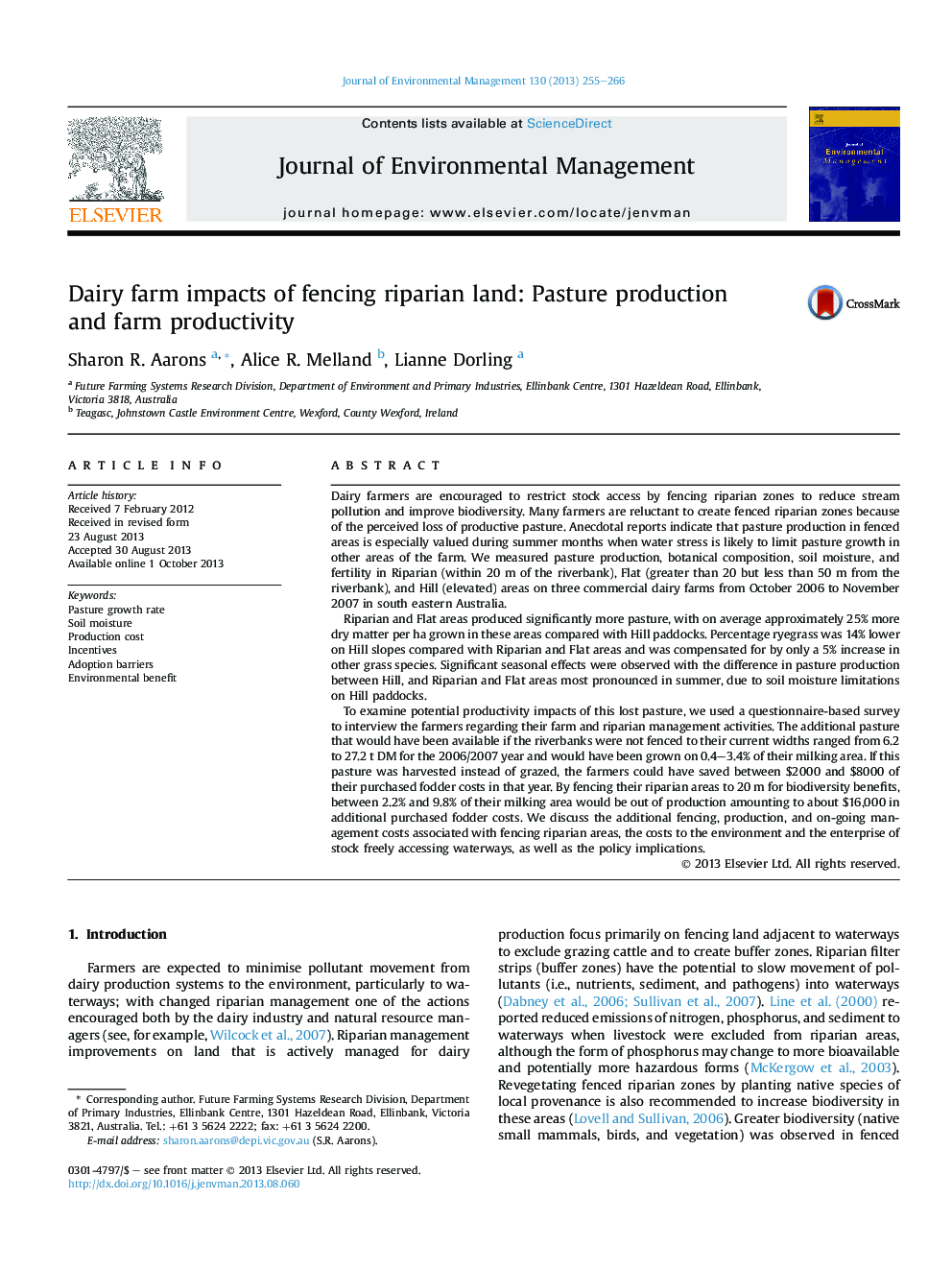| کد مقاله | کد نشریه | سال انتشار | مقاله انگلیسی | نسخه تمام متن |
|---|---|---|---|---|
| 1056094 | 1485282 | 2013 | 12 صفحه PDF | دانلود رایگان |

• Pasture DM and soil water were compared in riparian and elevated land on dairy farms in south eastern Australia.
• 25% more riparian pasture DM per hectare was grown with the biggest difference was in summer.
• If riverbanks were grazed, farmers could have saved up to $8000 on purchased feed.
• About $16,000 in extra purchased fodder would be needed if fencing to 20 m.
• The productivity impacts and the policy implications of fencing are discussed.
Dairy farmers are encouraged to restrict stock access by fencing riparian zones to reduce stream pollution and improve biodiversity. Many farmers are reluctant to create fenced riparian zones because of the perceived loss of productive pasture. Anecdotal reports indicate that pasture production in fenced areas is especially valued during summer months when water stress is likely to limit pasture growth in other areas of the farm. We measured pasture production, botanical composition, soil moisture, and fertility in Riparian (within 20 m of the riverbank), Flat (greater than 20 but less than 50 m from the riverbank), and Hill (elevated) areas on three commercial dairy farms from October 2006 to November 2007 in south eastern Australia.Riparian and Flat areas produced significantly more pasture, with on average approximately 25% more dry matter per ha grown in these areas compared with Hill paddocks. Percentage ryegrass was 14% lower on Hill slopes compared with Riparian and Flat areas and was compensated for by only a 5% increase in other grass species. Significant seasonal effects were observed with the difference in pasture production between Hill, and Riparian and Flat areas most pronounced in summer, due to soil moisture limitations on Hill paddocks.To examine potential productivity impacts of this lost pasture, we used a questionnaire-based survey to interview the farmers regarding their farm and riparian management activities. The additional pasture that would have been available if the riverbanks were not fenced to their current widths ranged from 6.2 to 27.2 t DM for the 2006/2007 year and would have been grown on 0.4–3.4% of their milking area. If this pasture was harvested instead of grazed, the farmers could have saved between $2000 and $8000 of their purchased fodder costs in that year. By fencing their riparian areas to 20 m for biodiversity benefits, between 2.2% and 9.8% of their milking area would be out of production amounting to about $16,000 in additional purchased fodder costs. We discuss the additional fencing, production, and on-going management costs associated with fencing riparian areas, the costs to the environment and the enterprise of stock freely accessing waterways, as well as the policy implications.
Journal: Journal of Environmental Management - Volume 130, 30 November 2013, Pages 255–266